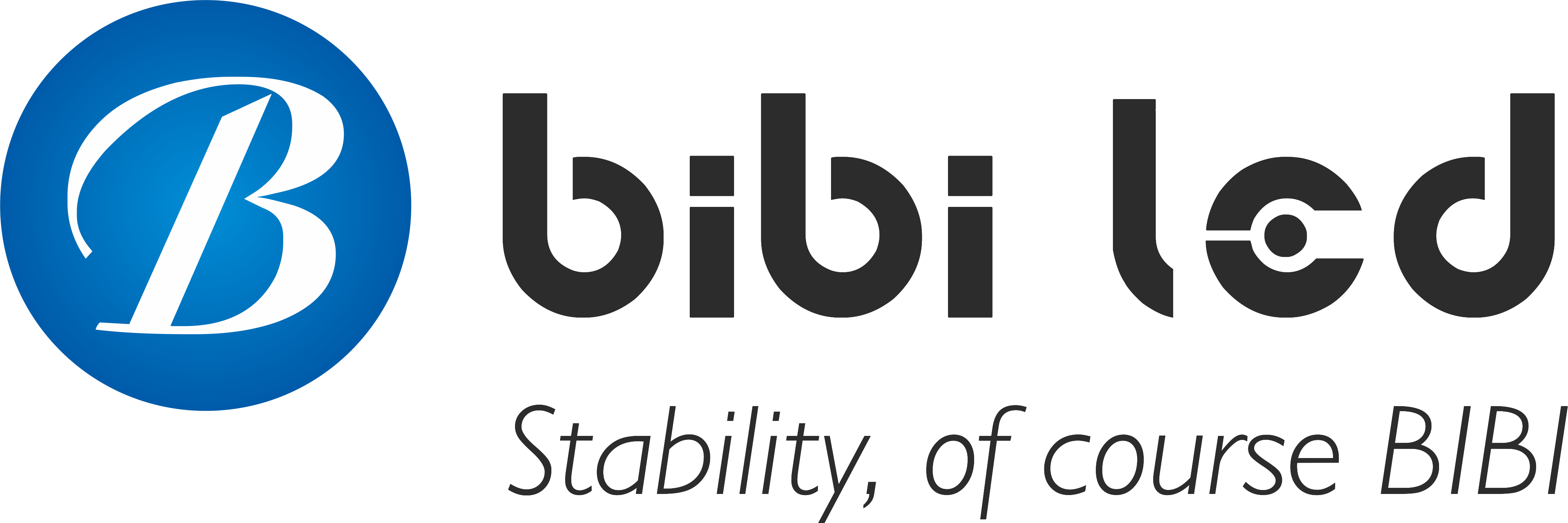مقدمة
When driving in a tunnel, have you ever been blinded by the strong light of the شاشة ليد or missed important information because the screen was too dim?
How should the brightness of the tunnel LED screen be set to clearly convey information without affecting driving safety? This article will reveal the answer for you.
جدول المحتويات
1. What are the factors affecting the brightness of the tunnel LED screen?
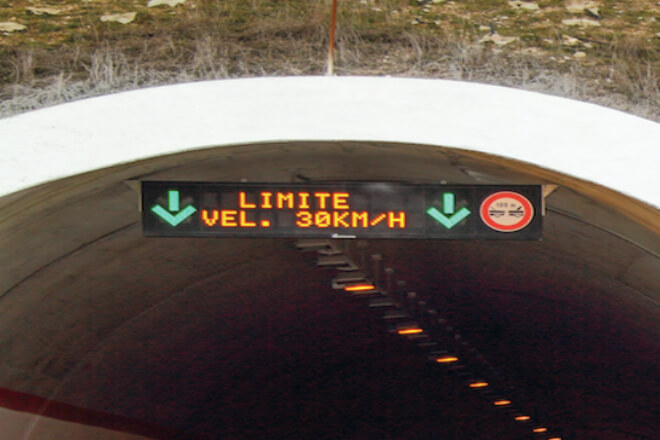
1). Changes in the brightness of the external environment
The light at the entrance of the tunnel changes greatly. When the sun comes out during the day, it is dazzling outside, and it is dark at night.
إذا سطوع of the LED screen is not adjusted properly, it is easy to cause problems: the brightness is not enough during the day, the content cannot be seen clearly, and the information becomes a “decoration”.
At night, it is too bright and dazzling. When the driver enters the tunnel and his eyes have not yet adapted.
A bright screen suddenly flashes out, which can easily make people uncomfortable and even affect driving safety.
Nowadays, most LED screens used in tunnels are equipped with automatic dimming functions, that is.
The screen can automatically adjust the brightness according to the intensity of the light outside, so that the picture is clear and not too dazzling.
However, the requirements of “how to adjust and how much to adjust” are really different in each place.
2). The particularity of light in the tunnel
Although the light in the tunnel is quite stable, dim, and there is no direct sunlight, in fact, this environment is quite “picky” for LED screens.
On the one hand, it mainly relies on artificial lighting, and the brightness is average, but not high.
On the other hand, there are always some “impurities” in the air – dust, water vapor, and even oil smoke. Over time, these things are easy to hang on the surface of the screen, not only affecting the brightness.
It may also make the picture look gray, and in severe cases, it will reflect or create a halo. The driver glances over and can’t see what is written, which is troublesome.
Therefore, the brightness of the tunnel LED screen cannot be too casual. If it is adjusted too high, the light will be dazzling when it is reflected; if it is adjusted too low, it is easy to “hide” in the fog or dust.
The key is to adjust the brightness, contrast, and screen material just right, so that people can see clearly and comfortably in that difficult environment.
3). Driver’s sight and reaction speed
Considering the driver’s sight and reaction speed when driving, the brightness of the LED screen should be moderate.
Too high brightness or screen flickering will interfere with the driver’s sight, causing fatigue or even short-term dizziness, affecting safety.
If the brightness is too low, the information cannot be seen clearly, and the driver’s slow reaction is also dangerous.
Therefore, when adjusting the brightness, it is necessary to ensure that the information is clear and easy to read and that the driver cannot be distracted, so as to ensure the safety of tunnel driving.
In summary, the brightness adjustment of the tunnel LED screen is not as simple as simply turning it up or down.
It must comprehensively consider the changes in light outside, the special environment in the tunnel, and the driver’s sight and reaction habits.
Now, most tunnels use intelligent photosensitive systems, which can automatically adjust the brightness in real time.
So that it is neither dazzling nor conspicuous enough, ensuring smooth information transmission and driving safety.
2. How do you determine the appropriate brightness value of the tunnel LED screen?
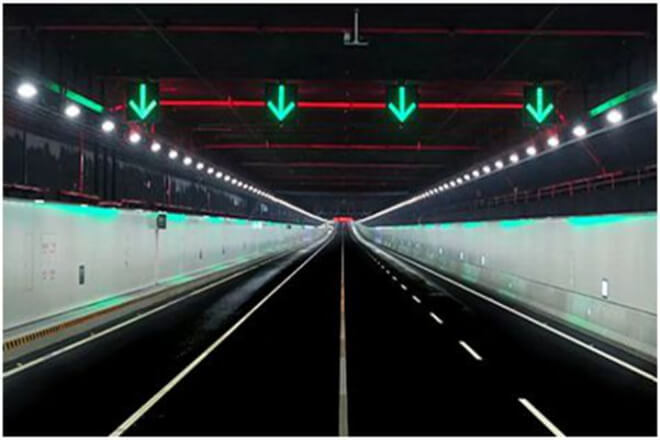
1). Refer to relevant standards in various places
In fact, different places have their own regulations and requirements for the سطوع of tunnel LED screens. These rules are based on local climate, traffic conditions, and safety needs.
Although the specific numbers are different, most standards will limit the maximum and minimum brightness of the screen.
The purpose is to ensure that the information is clear and the driver’s eyes will not feel glaring or uncomfortable.
Therefore, before adjusting the brightness of the LED screen, you must first understand whether there are similar regulations in your area and adjust it according to the requirements, so that both safety and compliance can be taken into account.
For example, in some mountain tunnels in Japan, because there is often fog, they not only adjust the brightness.
But also design the fonts of the LED screen to be particularly thick and high in contrast, so that they can be seen clearly even in heavy fog.
In some newly built tunnels in Germany, there is even a “gradual brightness” design. When the vehicle approaches.
The screen will slowly brighten or dim, giving the driver a buffer time so that it will not be suddenly dazzling.
So, adjusting the brightness of the LED screen seems simple, but it is actually quite particular. Each place has different environments and usage habits.
How to set it most appropriately depends on the actual situation. It is not that the brighter the better, but it is really “easy to use” to adjust it just right.
2). Adjust according to the length and size of the tunnel
The length and size of the tunnel will also affect how bright the screen should be set. Because the light difference between the entrance and exit of a long tunnel is quite large.
The LED screen needs to be able to adjust the brightness at any time to help the driver’s eyes quickly adapt to environmental changes.
If the tunnel is large, several LED screens may be used. At this time, the screen brightness must be kept consistent; otherwise, the visual experience will be weird.
In addition, the lighting arrangement in the tunnel is also very important. The brightness of the LED screen must be well matched with the surrounding ambient light, so that the display effect is natural.
For example, in the Changling Tunnel in Busan, South Korea, which is about 3.3 kilometers long, they installed 6 LED screens in it.
One every 500 meters on average, specifically for displaying speed limit reminders and emergency information.
Because the air humidity there is high and there is a lot of dust, they control the screen brightness to about 3000 nits.
But adjust the contrast to a very high level, so that the text can stand out and be seen clearly without being dazzling.
3). Road conditions and traffic volume cannot be ignored
Different road conditions, vehicle speeds, and traffic volumes require different brightness levels for LED screens.
In high-speed tunnels, the speed is fast, and the screen should be brighter so that the information can be seen quickly enough by the driver.
In tunnels with slow speeds or few cars, the brightness can be adjusted a little lower to avoid tiring the driver’s eyes.
Also, if there are complex sections such as bends and ramps in the tunnel, the brightness should be adjusted more carefully to ensure that the driver can also see the information on the screen in time in these places to ensure driving safety.
3. Potential hazards of excessive brightness of tunnel LED screens to driving
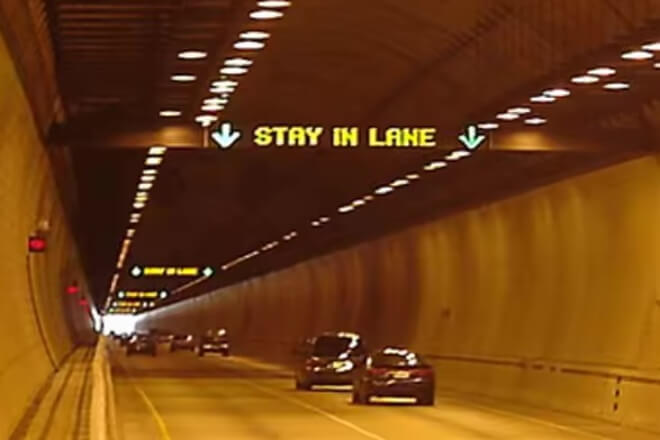
1). Visual fatigue and glare
If the brightness of the LED screen in the tunnel is adjusted too high, the driver’s eyes will easily be unable to bear it.
Strong and dazzling light will cause obvious glare, especially in the dark environment of the tunnel itself, and this glare will be more intense.
When drivers are stimulated by strong light for a long time, their eyes will feel dry, sore, and even dizzy, and their attention will be easily distracted.
Once visual fatigue occurs, the safety of driving will naturally be greatly reduced, especially in a special environment such as a tunnel, where any distraction may cause an accident.
2). Impact on vision health
Excessive screen brightness not only makes the eyes feel uncomfortable at the moment but may also cause long-term damage to vision.
Frequent exposure to LED screens with high brightness can easily cause dryness, stinging.
And other discomfort symptoms in the eyes, which may lead to decreased vision over time and even aggravate eye fatigue syndrome.
For drivers who often drive in tunnels, this cumulative damage cannot be underestimated and may gradually affect their driving ability and quality of life.
3). Delay in driver reaction speed
LED screens with high brightness will interfere with the driver’s visual judgment and slow down the reaction speed.
Strong light temporarily causes the eyes to lose the ability to adapt, and it takes longer to see the road conditions and screen information clearly. In this way, the driver is likely to miss key traffic prompts or warnings.
Especially in tunnels, where the light environment is complex and the road conditions are changeable, any visual interference may have serious consequences.
Slow reaction not only affects driving safety but may also cause chain accidents.
4. Safety hazards of low brightness of tunnel LED screens
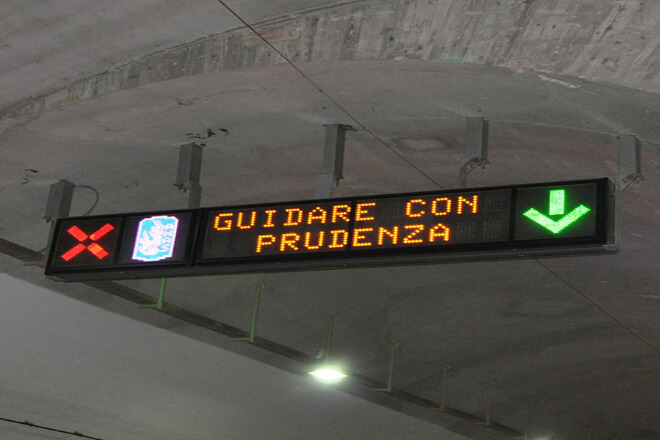
The brightness of the LED screen in the tunnel is too low, and the text and patterns on the screen will become blurred.
Especially when the light inside the tunnel is relatively dim. This problem is more likely to occur.
If the driver cannot see clear traffic information while driving, he will often miss important prompts, resulting in the inability to make correct judgments in time.
After all, the environment in the tunnel is limited, and the information is not clear enough, so the effect is naturally greatly reduced.
The screen brightness is insufficient, and the driver may not be able to find important information such as speed limit, traffic control, and construction reminders at first glance.
For example, if there is a road repair or temporary closure ahead, the driver fails to see the warning on the screen in time and may not be able to slow down or change lanes in advance.
Especially in the tunnel environment with high speed, this information delay is likely to have serious consequences.
The tunnel road conditions are complex in themselves, and insufficient brightness slows down the transmission of information, which naturally raises safety hazards.
When the driver cannot see key information because the LED screen is too dim, the risk of accidents is significantly increased.
For example, if you fail to notice the construction or emergency ahead in time, and you don’t have time to brake or adjust the lane, it is very easy to cause a rear-end collision.
The tunnel itself has a narrow space and limited vision. Any information that is not displayed properly may make the driving environment more dangerous.
This problem may seem small, but once an accident occurs, the consequences may be very serious.
In addition to unclear information, low brightness may also make drivers nervous, because they have to concentrate more on “guessing” the content on the screen, which can easily increase fatigue over a long period of time.
This mental burden will also affect driving performance and increase the risk of accidents.
5. Strategies for reasonably setting the brightness of tunnel LED screens

1) Intelligent technology for automatic brightness adjustment
Nowadays, many LED screens in tunnels are equipped with intelligent brightness adjustment functions, which can automatically sense changes in the surrounding light and then adjust the brightness by themselves.
For example, when the sun is strong during the day and it is particularly bright outside, the screen brightness will automatically increase to ensure that the driver can see clearly.
At night or when the weather is gloomy, the screen will automatically adjust down to avoid glare and blinding.
This automatic adjustment method not only keeps the information clear at all times, but also protects the eyes. The driver has less visual pressure while driving and feels more at ease.
It is worth mentioning that in a tunnel where the light is dim and relatively uniform, the optimal brightness of the LED screen does not actually need to be particularly high.
According to some industry recommendations, the most suitable brightness range in a dim light environment is about 500 to 800 nits.
If it exceeds 1000 nits, there may be glare and reflection problems, which will affect viewing.
The automatic adjustment system can just keep the brightness in this comfortable range of “bright enough but not dazzling” to adapt to various light changes.
2) Adjust the brightness according to the time period (day and night)
The light difference between day and night is quite large. If the LED screen has the same brightness all day, the experience will definitely not be good.
Therefore, many projects now adopt the “time-sharing adjustment” method: adjust the brightness higher during the day.
Such as to more than 1500 nits, to offset the strong light outside and ensure that the picture is still eye-catching and clear.
At night, adjust it lower, perhaps to between 600 and 800 nits, to avoid screen glare, reduce glare, and make the driver’s eyes less tired.
Such a time-sharing setting is actually very practical. It can not only ensure that the information is not “invisible” but also prevent the LED screen from becoming a dazzling light bulb at night.
The visual experience is more comfortable, and the overall safety can also be improved.
3) Use ambient light sensors to optimize brightness
The current LED screen is like a “photosensitive eye”. The screen is equipped with an ambient light sensor that can monitor the intensity of external light in real time.
For example, when it is cloudy or rainy, or when the vehicle just exits the tunnel and the sun is suddenly strong, the sensor will immediately feed back to the system to adjust the brightness parameters of the LED screen.
In this way, whether in a foggy mountain tunnel or on a sunny southern highway.
The screen can quickly adapt and always maintain the appropriate brightness range – brighter during the day and maintained at the recommended 500-800 nits at night.
Compared with those old systems that are rigidly set to fixed brightness, this dynamic sensing + intelligent adjustment method has indeed taken the practicality, comfort, and safety of LED screens to a higher level.
6. الخاتمة
Reasonably setting the brightness of the tunnel LED screen can not only effectively convey information, but also ensure driving safety.
If you encounter any problems in actual operation or want to know more about LED display information, please feel free to contact us. We will provide you with professional solutions.
Articles you may be interested in:
